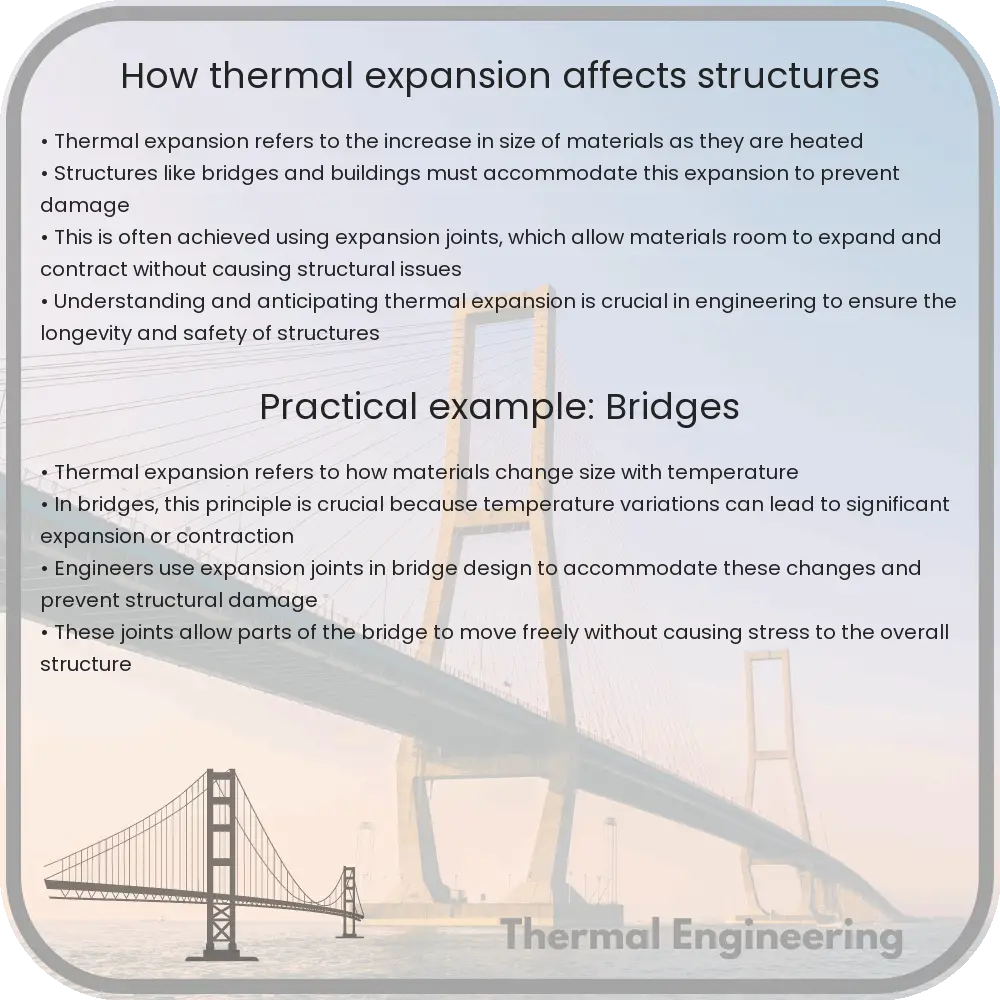Learn about thermal expansion and its importance in engineering, from the basics of how materials react to temperature changes to strategies for mitigating its impact on structures.

Understanding How Thermal Expansion Affects Structures
Thermal expansion refers to the tendency of matter to change its shape, area, and volume in response to a change in temperature. This concept is crucial in engineering and construction because it affects materials used in buildings, bridges, railways, and other infrastructure. Ignoring thermal expansion can lead to failed components and even safety hazards. Here, we will explore how thermal expansion impacts structures and the engineering principles used to mitigate its effects.
Basic Principles of Thermal Expansion
Most materials expand when heated and contract when cooled. The degree of this expansion or contraction is characterized by the material’s coefficient of thermal expansion (CTE), which is typically expressed as a fractional change in size per degree change in temperature (e.g., 1/C°). For instance, metals generally have higher CTEs than ceramics or composites. Understanding and calculating this expansion is essential for designing structures that can withstand temperature variations.
The formula used to calculate the linear expansion of an object is:
\[ \Delta L = \alpha L_0 \Delta T \]
- \(\Delta L\): Change in object length
- \(\alpha\): Coefficient of thermal expansion
- \(L_0\): Original length of the object
- \(\Delta T\): Change in temperature
Examples of Thermal Expansion in Structures
Everyday examples of thermal expansion can be seen in structures like bridges and railways:
- Bridges: To allow for thermal expansion, engineers design bridges with expansion joints. These joints accommodate the expansion and contraction of materials, preventing structural damage. For instance, the steel beams used in bridges can expand several inches over their length during summer, and without expansion joints, this could lead to buckling, structural failure, or increased stress in other components.
- Railways: Railroad tracks are also subject to significant thermal expansion. The tracks are laid with small gaps between the sections of rails, allowing them enough space to expand in hot weather without causing buckling or derailing trains.
Materials with High vs. Low Coefficient of Thermal Expansion
The choice of building material is significantly influenced by its thermal properties, especially the coefficient of thermal expansion. Here’s how different materials behave:
- Metals: Aluminium, steel, and other metals have high CTEs and thus are more susceptible to expanding in heat and contracting in cold.
- Composites and Ceramics: These materials generally have lower CTEs, meaning they experience less dimensional change with temperature fluctuations, making them suitable for applications requiring high dimensional stability under varying temperatures.
Mitigation Strategies for Thermal Effects
Engineers implement various strategies to mitigate the impacts of thermal expansion in construction and design:
- Using materials with compatible thermal expansion properties: Careful selection of materials that expand and contract similarly can reduce stresses and deformations in composite structures.
- Thermal barriers and insulations: Incorporating thermal barriers and insulation can regulate the temperatures that materials are exposed to, thus limiting thermal expansion and contraction.
- Structural adjustments: Designing components with tolerances for expected thermal expansion allows structures to adapt to temperature changes without damage.
Conclusion
Understanding thermal expansion and its effects on materials is critical in engineering. By accurately calculating expected expansions and designing structures to accommodate these changes, engineers can ensure the safety, reliability, and longevity of structures. Whether it’s a bridge, a skyscraper, or a railroad track, accounting for thermal expansion is a fundamental aspect of the design and construction process that cannot be overlooked.